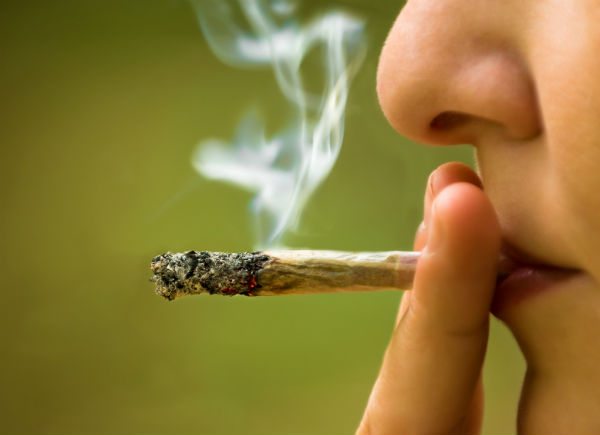Counseling Parents and Teens About Marijuana Use in the Era of Legalization of Marijuana
Abstract
Many states have recently made significant changes to their legislation making recreational and/or medical marijuana use by adults legal. Although these laws, for the most part, have not targeted the adolescent population, they have created an environment in which marijuana increasingly is seen as acceptable, safe, and therapeutic. This clinical report offers guidance to the practicing pediatrician based on existing evidence and expert opinion/consensus of the American Academy of Pediatrics regarding anticipatory guidance and counseling to teenagers and their parents about marijuana and its use. The recently published technical report provides the detailed evidence and references regarding the research on which the information in this clinical report is based.
- Abbreviations:
- AAP —
- American Academy of Pediatrics
- SBIRT —
- Screening, Brief Intervention, and Referral for Treatment
Background
The legalization of medical marijuana in many states and the District of Columbia and the outright legalization of recreational marijuana for adults aged 21 years and older in a few states and the District of Columbia have resulted in changes in the access to and availability of this drug. Most of these states now allow the use of marijuana for a variety of medical conditions in adults as well as in children (with parental permission). In addition, many states have reduced penalties for the recreational use of marijuana; criminal penalties have been reduced from felonies in some cases to misdemeanors or infractions.1 For up-to-date information on the numbers of states allowing these laws related to marijuana use, the reader is referred to www.aap.org/marijuana.
Although there are currently no initiatives to legalize the recreational use of marijuana for minors and marijuana is still a federally controlled substance, changes in the legal status of marijuana, even if limited to adults, may affect use among adolescents by decreasing the perceived risk of harm or through the marketing of legal marijuana, despite restrictions that prohibit marketing and advertising to this age group. The National Survey on Drug Use and Health recently documented a decline in the percentage of 12- to 17-year-olds who perceived that there is “great risk” in smoking marijuana once a month or 1 to 2 times per week, which is concerning, because the same survey has documented that decreases in perceived risk typically precede or occur at the same time as increases in use.2 The concentration of tetrahydrocannabinol, or THC, the psychoactive substance in the marijuana plant, has increased considerably, from approximately 4% in the early 1980s to upward of 12% in 2012,3 increasing the risk of adverse effects and the potential for addiction.
Studies have been conducted in adults to research the potential therapeutic effects of the class of chemicals known as cannabinoids (the active compounds in marijuana) administered either as a pharmaceutical preparation or as marijuana leaves, distilled oils, or edibles and drinkables. Cannabinoids have been shown to be helpful for adults in addressing some symptoms, such as increasing appetite and decreasing nausea and vomiting in patients receiving chemotherapy and reducing pain in chronic neuropathic pain syndromes. Cannabinoids may have adverse effects, however, such as dizziness, dysphoria, and clouded sensorium.4,5 The only studies that have been published on the use or efficacy of medicinal marijuana in children and adolescents have been limited to its use in the treatment of refractory seizures.6,7
The adverse effects of marijuana have been well documented. Numerous published studies have shown the potential negative consequences of short- and long-term use of recreational marijuana in adolescents.8 These consequences include impaired short-term memory and decreased concentration, attention span, and problem-solving skills, all of which interfere with learning. Alterations in motor control, coordination, judgment, reaction time, and tracking ability have also been documented. These effects may contribute to unintentional deaths and injuries among adolescents, especially those who drive after using marijuana. Negative health effects on lung function associated with smoking marijuana also have been documented9; in addition, longitudinal studies linking marijuana use with higher rates of mental health disorders, such as depression and psychosis, recently have been published, raising concerns about longer-term psychiatric effects.8,10 Secondhand marijuana smoke can also be detected in adults who are passively exposed, and new data also suggest that secondhand marijuana smoke may be harmful to children.11 A recent study found that in an inpatient sample of infants admitted for respiratory compromise, 1 in 6 had detectable traces of marijuana in their systems.12
The adolescent brain, particularly the prefrontal cortex areas that control judgment and decision-making, is not fully developed until the early 20s, raising questions about how any substance use may affect the developing brain.8,13–15 Studies examining brain functioning in youth who use cannabis regularly or heavily (defined as using 10–19 times/month or 20 or more times/month, respectively) show potential abnormalities that occur across a number of brain regions including those affecting memory (hippocampus) and executive functioning and planning (prefrontal cortex).13–15 Studies assessing the role of marijuana on brain morphology are inconsistent, with 1 study citing increased and decreased volumes of subcortical structures16 and another citing no effect on structures such as the amygdala and hippocampus.17 A major study also has shown that long-term marijuana use initiated in adolescence has negative effects on intellectual function and that the deficits in cognitive areas, such as executive function and processing speed, did not recover by adulthood, even when cannabis use was discontinued.18
As with other psychoactive substances, the younger an adolescent begins using drugs, including marijuana, the more likely it is that drug dependence or addiction will develop in adulthood.15,19 Evidence clearly shows that marijuana is an addictive substance; overall, 9% of those experimenting with marijuana will become addicted; this percentage increases to 17% among those who initiate marijuana use in adolescence and to a range of between 25% and 50% among teenagers who smoke marijuana daily.20 It should be noted that most teenage patients addicted to marijuana do not have lifelong addiction; however, significant effects on cognitive and psychosocial function may occur during the addiction period.21
Marijuana use during pregnancy has adverse effects on the fetus, including growth retardation. Longer-term consequences of prenatal marijuana use that have been reported in infants and children include subtle deficits in learning and memory as well as deficits in executive functions, such as problem-solving skills that require sustained attention, analysis, and integration.22
Role of the Pediatrician
Pediatricians are in an influential position to counteract the perception of teenage marijuana use as benign. Research findings regarding the health effects of marijuana on children and adolescents provide guidance for parents and their children. The office setting provides an excellent opportunity for education and counseling to prevent marijuana use as well as to implement brief interventions and referrals if needed. Parents who use marijuana may not fully realize the problems that their own use may present for their children’s health; the effect that their modeling of recreational use may have on their child, adolescent, or young adult23,24; or the risks of ingestion25,26 and/or secondhand smoke.9
The American Academy of Pediatrics (AAP) recognizes that parents may choose to administer marijuana to children with severely debilitating or severe chronic conditions when other standard therapies have proven inadequate or in compassionate care/end-of-life care situations and that they may seek support for this practice from their child’s pediatrician. However, because marijuana use is still considered a federal offense, there may be legal ramifications for a pediatrician formally recommending the use of medical marijuana in these extenuating circumstances. Awareness of one’s state laws and protections for medical providers is essential, and direct discussion of this issue with one’s state medical board may be appropriate.
The following sections include key facts and suggested talking points for the pediatrician to use in speaking with youth and their parents about marijuana and the effects of its use. For detailed references to the data listed in this statement, the reader is referred to the full technical report published by the AAP.1
Office Approach to the Adolescent Patient
-
Adolescents and preteens may be screened for substance use and brief intervention, as recommended in the Screening, Brief Intervention, and Referral for Treatment (SBIRT) policy statement.27 The effectiveness of the SBIRT technique has been documented in adults with alcohol use problems; because of the lack of information in the adolescent population, the US Preventive Services Task Force recently gave SBIRT an “I” rating, stating that there was insufficient evidence to recommend either for or against this technique. However, on the basis of the limited evidence available and the low cost of this brief intervention, the AAP and the National Institute on Alcohol Abuse and Alcoholism both recommend that this technique be used in pediatric practices as part of routine care.
-
For adolescents who do not use marijuana, motivational techniques may be helpful in eliciting reasons for abstaining from use and resisting peer pressure in a manner that supports their decision to abstain.
-
Adolescents who use marijuana regularly or heavily are more likely to meet criteria for a substance use disorder. For these teenagers, a brief motivational intervention may be used to target: (1) reducing use and (2) continuing the conversation either with the pediatrician or a mental health or behavioral counselor. Additional advice for gathering information that is helpful to determine the extent and severity of use follows:
-
Ask the adolescent how much and how often he or she uses marijuana. Also ask about the circumstances (ie, where the marijuana is obtained, if use is with others versus alone, if use is before or during school versus on the weekends) and motivations (when stressed, bored, alone, angry, etc) associated with the decision to use the substance. Although teenagers may use marijuana for the positive euphoric effects or for social acceptance, they also may use marijuana for self-medication, such as to relieve negative moods (ie, stress, anxiety, or depression)28 or for sleep problems. Teenagers who use marijuana for these purposes who meet criteria for a co-occurring mental health disorder may benefit from treatment, including counseling and/or a psychiatric evaluation.
-
Take a detailed history that includes identifying concerns associated with marijuana use. Criteria in the Diagnostic and Statistical Manual of Mental Disorders, Fifth Edition (see Table 1), can be useful as a guideline in ruling out problematic marijuana use.29
-
If the adolescent does not report regular use of marijuana and denies any associated problems, offer a “challenge.” Ask the adolescent to quit using the drug for a brief period of time, and see what happens. If the adolescent is able to stop completely, ask whether life was “better, worse, or the same” during the quit period to prompt a discussion of pros and cons of use. If the adolescent was unable to stop completely, explore possible triggers and high-risk situations that were barriers to success. Work with the adolescent to problem-solve and try again. If the adolescent was unwilling to quit, even for a limited period of time, explore the motivations for drug use (see talking point 1) and consider whether any additional interventions or supports may be helpful. Talking points can be introduced as areas of concern but also can be used to trigger engagement and discussion during brief interventions (eg, information about the modeling effect of parental smoking and the current understanding of marijuana effects in teenagers). If there are major concerns for the teenager’s safety or the teenager is considered at high risk of adverse consequences, breaking confidentiality and notifying the parents may be advisable to ensure the patient’s safety.
-
TABLE 1
DSM-5 Criteria for Marijuana Use Disorder29
Talking Points for Parents and Teens: Handout
-
Marijuana is not a benign drug for teens. The teen brain is still developing, and marijuana may cause abnormal brain development.
-
Teens who use marijuana regularly may develop serious mental health disorders, including addiction, depression, and psychosis.
-
There are no research studies on the use of medical marijuana in teens, so actual indications, appropriate dosing, effects, and side effects are unknown. The only data available on medical marijuana in the pediatric population are limited to its use in children with severe refractory seizures.
-
Recreational use of marijuana by minors and young adults under the age of 21 years is illegal and, if prosecuted, may result in a permanent criminal record, affecting schooling, jobs, etc.
-
Never drive under the influence of marijuana or ride in a car with a driver who is under the influence of marijuana. Adults and teens regularly get into serious and even fatal car accidents while under the influence of marijuana.
-
Marijuana smoke is toxic, similar to secondhand tobacco smoke. The use of vaporizers or hookahs does not eliminate the toxic chemicals in marijuana smoke.
-
For parents: You are role models for your children, and actions speak louder than words. So if you use marijuana in front of your teens, they are more likely to use it themselves, regardless of whether you tell them not to. (See the AAP Healthy Children Web site: www.healthychildren.org/English/ages-stages/teen/substance-abuse/Pages/Drug-Abuse-Prevention-Starts-with-Parents.aspx.)
-
For parents: It is important to keep all marijuana products away from children. As with other medications and toxic products, containers that are child-proof and kept out of reach should be used. For small children, marijuana edibles and drinks can be particularly dangerous.
-
For parents: Remember that intoxication and euphoria are predictable effects of using marijuana products. Being “high” from your own recreational or medical marijuana use may alter your capacity to function safely as a parent or to provide a safe environment for infants and children.30
-
For parents: If your child asks you directly whether you have used marijuana, a brief, honest answer may help the child feel comfortable talking with you about drug use issues. However, it is best to not share your own histories of drug use with your children. Rather, discussion of drug use scenarios, in general, may be a more helpful approach.
Summary and Conclusions
Pediatricians are in a unique position to provide parents and teenagers with accurate information and counseling regarding the consequences of marijuana or cannabis use by children, teenagers, and adults. A number of strategies can be used to counsel families about preventing use and to intervene if marijuana is being used either recreationally or medically by the families for whom they provide medical care.
Authors
Sheryl A. Ryan, MD, FAAP
Seth D. Ammerman, MD, FAAP
Committee on Substance Use and Prevention, 2016–2017
Sheryl A. Ryan, MD, FAAP, Chairperson
Pamela K. Gonzalez, MD, MS, FAAP
Stephen W. Patrick, MD, MPH, MS, FAAP
Joanna Quigley, MD, FAAP
Leslie R. Walker, MD, FAAP
Former Committee Members
Seth D. Ammerman, MD, FAAP
Sharon Levy, MD, MPH, FAAP
Lorena Siqueira, MD, MSPH, FAAP
Vincent C. Smith, MD, MPH, FAAP
Liaisons
Vivian B. Faden, PhD – National Institute of Alcohol Abuse and Alcoholism
Gregory Tau, MD, PhD – American Academy of Child and Adolescent Psychiatry
Staff
Renee Jarrett, MPH
Footnotes
- Address correspondence to Sheryl Ryan, MD, FAAP. E-mail: sheryl.ryan@yale.edu
-
This document is copyrighted and is property of the American Academy of Pediatrics and its Board of Directors. All authors have filed conflict of interest statements with the American Academy of Pediatrics. Any conflicts have been resolved through a process approved by the Board of Directors. The American Academy of Pediatrics has neither solicited nor accepted any commercial involvement in the development of the content of this publication.
-
Clinical reports from the American Academy of Pediatrics benefit from expertise and resources of liaisons and internal (AAP) and external reviewers. However, clinical reports from the American Academy of Pediatrics may not reflect the views of the liaisons or the organizations or government agencies that they represent.
-
The guidance in this report does not indicate an exclusive course of treatment or serve as a standard of medical care. Variations, taking into account individual circumstances, may be appropriate.
-
All clinical reports from the American Academy of Pediatrics automatically expire 5 years after publication unless reaffirmed, revised, or retired at or before that time.
-
FINANCIAL DISCLOSURE: The authors have indicated they do not have a financial relationship relevant to this article to disclose.
-
FUNDING: No external funding.
-
POTENTIAL CONFLICT OF INTEREST: The authors have indicated they have no potential conflicts of interest to disclose.
- Copyright © 2017 by the American Academy of Pediatrics









